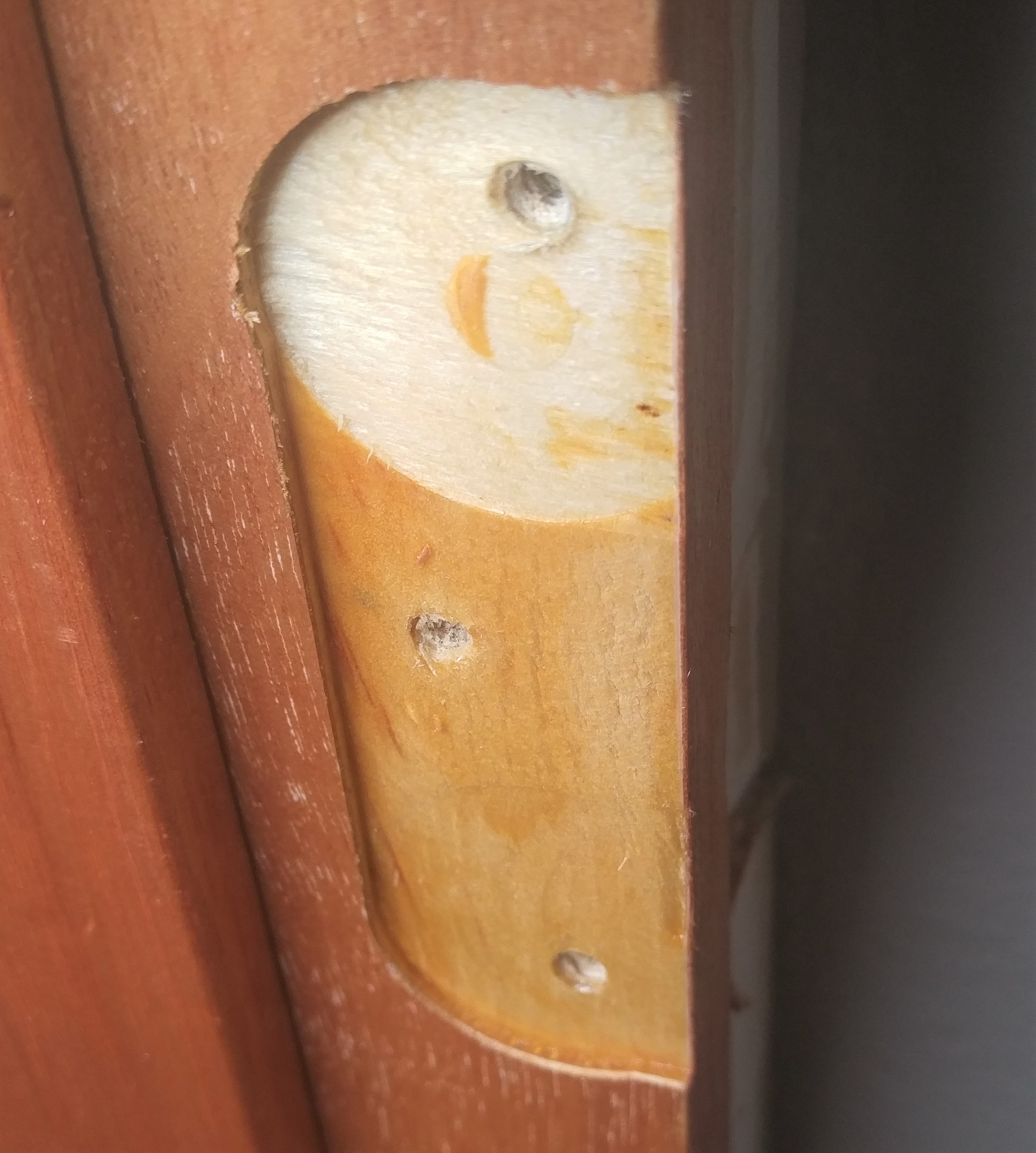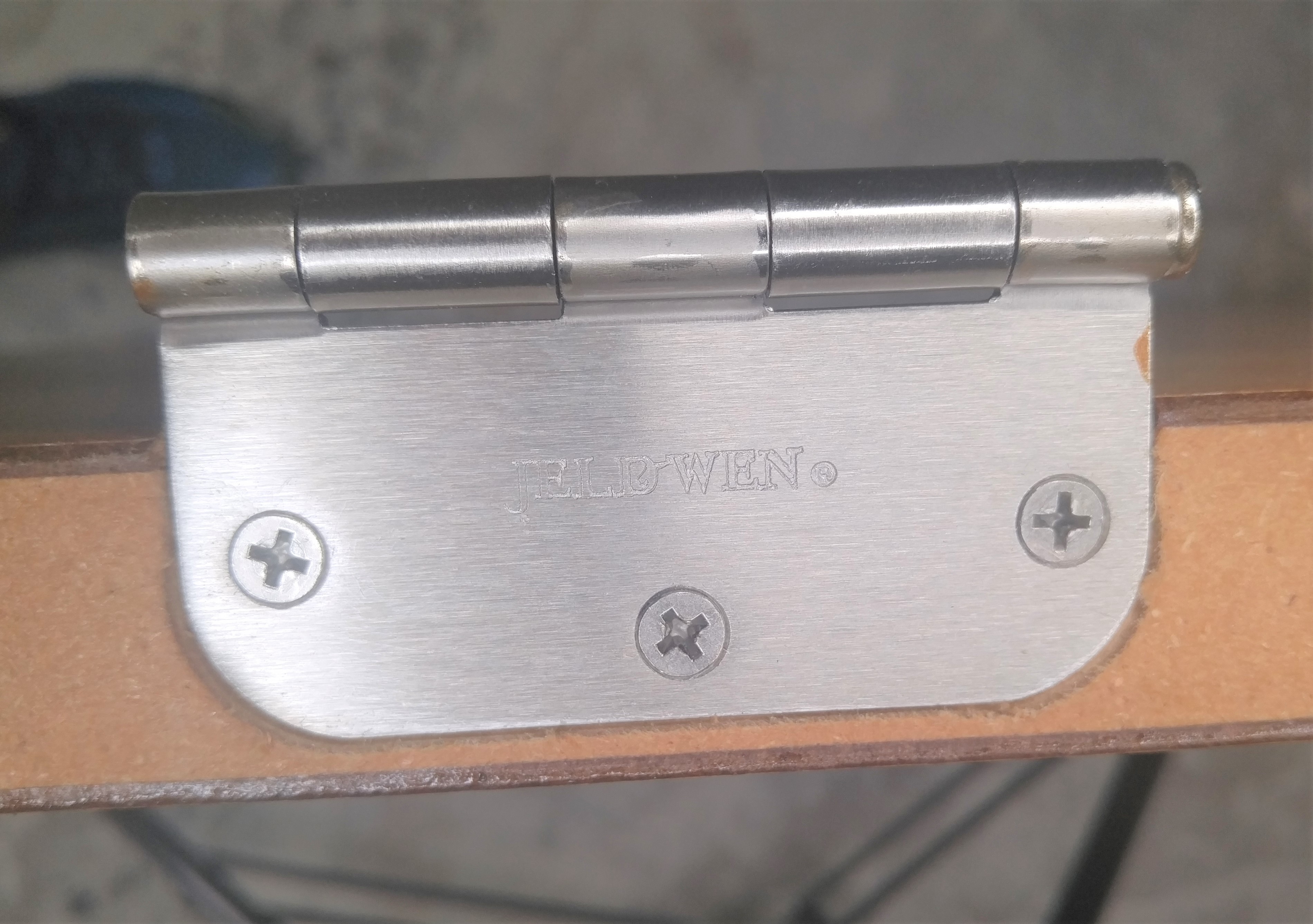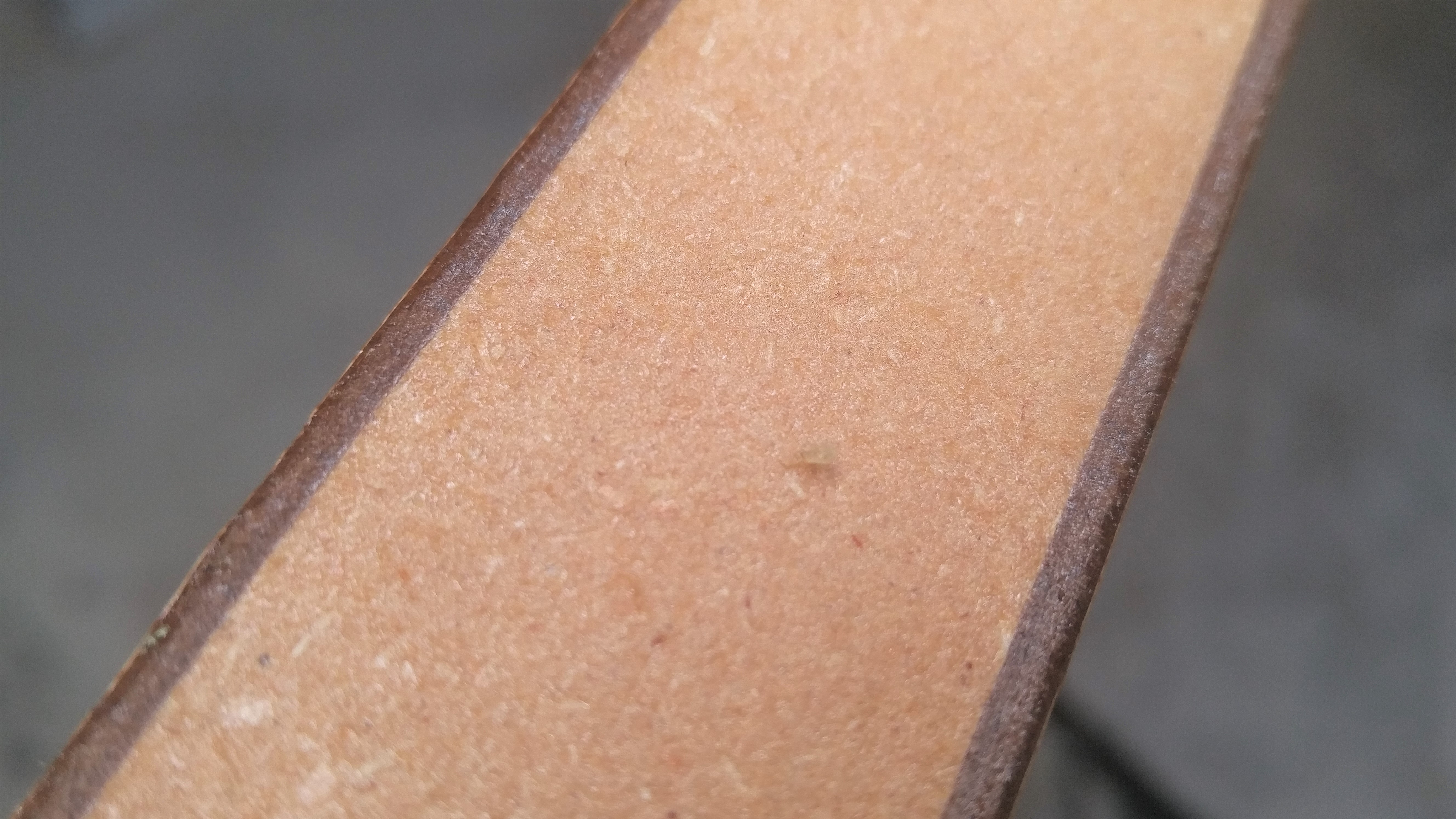Jeld-Wen Interior Hardwood Door: What It Is, How It Is
Jeld-Wen interior hardwood doors, in both slab and pre-hung versions, are found at Home Depot and independent retailers. What is this door, where can you use it, and what’s the difference between the two?
What It Is

It is a door intended only for interior installations (closets, bathrooms, etc.). It is made of either an MDF or finger-jointed pine base, with hardwood veneer for appearance. It comes in either slab version (door only) or pre-hung (frame and other features), with the slab costing roughly half the price of the pre-hung version.
Objective Details
Home Depot and other retailers sell Jeld-Wen interior hardwood doors, yet not much information is available in the store about what this is exactly and how it is constructed. Here are details:
They Call it a “Flush All Panel” Door
Jeld-Wen uses the term “flush” to mean that the two large facing surfaces are completely flat. It also uses the unusual term “all panel,” which really just means that it has one panel instead of several panels (as found with a classic six panel door).
Slab vs. Pre-Hung

In general, a slab door is just the door and a pre-hung door is the door that is already attached to an outer frame with hinges. Specifically for these Jeld-Wen doors, you receive (and do not receive):
Slab:
- Door
- Doorknob hole already cut out for you
- No: mortises for hinges, doorknob, hinges, staining, or sealing
Pre-hung:
- Door
- Doorknob hole already cut out for you
- Door mortised for hinges, plus the hinges, plus the hinges already attached to the door
- Outer frame to which the door is already attached by hinges
- Cut-out in the door frame to accept a strike plate
- No: Strike plate, doorknob, staining, or sealing

How It Is
I have purchased a few of these Jeld-Wen doors, both slab and pre-hung. My experience has been mainly good. I find that it is an attractively priced but delicate product due to a poorly applied veneer that was nearly a deal breaker. Quality is inconsistent from door to door.
Appearance
Attractive but not overly beautiful inexpensive hardwood veneered on top of either an MDF or a pine core. As with all other cheap hardwoods, you can stain it to give it a richer appearance. For me, a smooth mid-century modern appearance was important, but I had no need for an expensive door.
Cost
Because these doors are so inexpensive, you can afford to change out all the doors in your house, if desired. The pre-hung doors are in the $65 to $80 range, and similarly-sized slab doors are about half the price.
Material Types Not Labeled
Not all Jeld-Wen interior hardwood doors use the same base and veneer materials. Even the Jeld-Wen site does not clearly state which kind of base you are getting, but it seems to me that the slab doors have a finger-jointed pine base and the slab door have an MDF base. Jeld-Wen offers veneers in red oak, birch, and tropical hardwood (which I believe would mean luan), but again, this is not listed on the packing materials.
MDF Edges Difficult to Finish

The MDF edges vie with the poor veneering (below) as one of the worst aspects of this door. I will admit to being clueless as to how the MDF edges of this door should be finished, short of painting them. Stain does not apply evenly to MDF. Clear coating raises the nap on this already fuzzy surface.
Poor Veneering
Veneer around the edges is not always well bonded. Areas where a power tool in the factory worked on the door (namely the door knob circle cut) are especially gnawed up. Even after the door is carefully removed from the protective cardboard, corners were slowly pulling up. The veneer is delicate around the edges and extreme care must be taken not to flake it away. When setting the door on edge, always set it on something soft, like a towel or carpet remnant.
Sources
The Jeld-Wen company site has some information in their Flush Wood Composite door section.